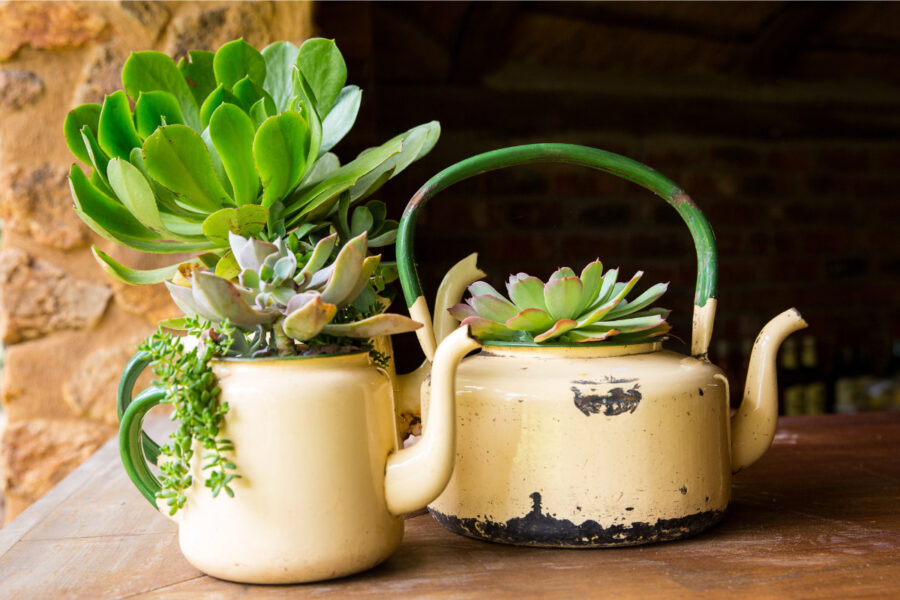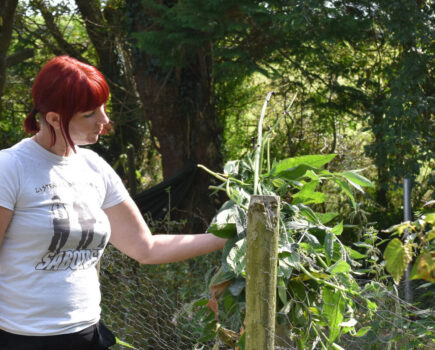Editor and eco-expert Kim Stoddart outlines some easy ways to cut costs this autumn
With the festive season looming large on the horizon, and the present buying frenzy that lies therein, there has arguably never been a better time to balance this with some fine cash-free wins. It’s also been an incredibly challenging year with the topsy-turvy weather. So if you are feeling a bit down and ‘robbed’ of a summer, worried about climate change and the ongoing cost of living, or are just open to some feel-good cheer, I urge you to make like a thrifty peasant and get creative with some good honest money-saving.
To ponder, improvise, fix, mend and upcycle with materials you can find is good for the soul as much as the wallet. It’s a way of taking some control back in a crazy world, of forging greater connection with your garden, community and inner resilience skills and …. I offer up just a few very easy ideas to help you on your merry way.
Repurposing plastic

There has been a lot of noise (rightly so) in recent years about the big issues with single-use plastics. I won’t get all doom and gloom about the reasons why here, but the more we can reduce our reliance on this useful but damaging material, the better that has to be. There are many viable alternatives to plastics on the market today but also, it’s important to try and make longer term use of plastic items that have already been produced. Help turn this idea of single use around by seeing every piece of packaging, pot and product as a potential something else for the future. From saving bubble wrap or clear plastic to be used as a valuable over winter protection for plants, to the turning of supermarket food trays or yoghurt pots into planters, it all helps, item by item. Plastic plant labels can be cleaned and reused, milk bottles turned into labels for plants, the list of uses goes on and on and it’s exciting to think of new ways of going about it.
Foraging for leaf mould in the garden
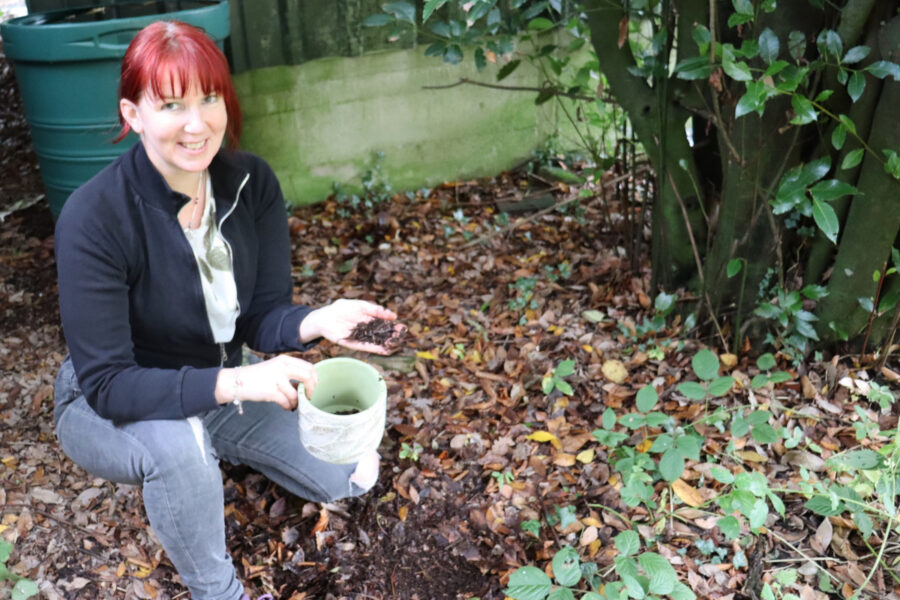
Andrew Oldham writes about making your own leaf mould on pg. 47 and this valuable material has so many uses I implore you give it a go. Other methods for bagging your own soil improver and seed compost for free include the following:
Use leaves to mulch beds or borders overwinter. Do be careful if you’ve had a slug issue this year, but otherwise the leaves can be piled and spread and left in situ they will protect the soil, help encourage earthworm activity below ground, and act as a useful overwinter habit for many insects. This in turn helps provide food for birds as they rummage through the leaves and assists with natural pest control.
At the end of the winter, when signs of spring are in the air, simply then remove your leaves carefully by hand, as frogs, newts or other valuable predators may still be using this abode, and place them in a dedicated leaf mould pile to continue breaking down.
Alternatively you can create free-spirited piles around your garden, under trees out of the way, to create on-demand supplies of leaf mould in years to come. When I was gardening for free for The Guardian and had to figure out how I was going to plant seeds and make leaf mould quickly, I realised that under some of my trees where leaves had been left to fall and gather, if I scrapped back the surface there was a supply of lovely free seed compost already underneath. You sometimes get a few weed seeds also germinating in this way, but they are easy to pick out and remove.
TIP Leaves may blow around a bit to begin with so choose a bed or border that is more sheltered.
Bring the outdoors in
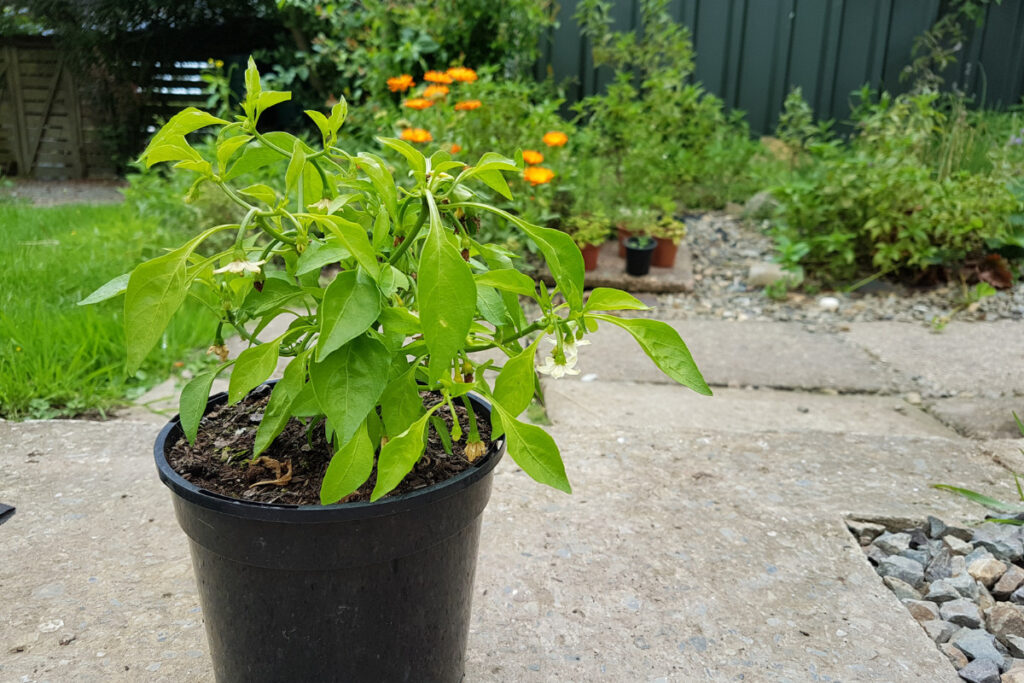
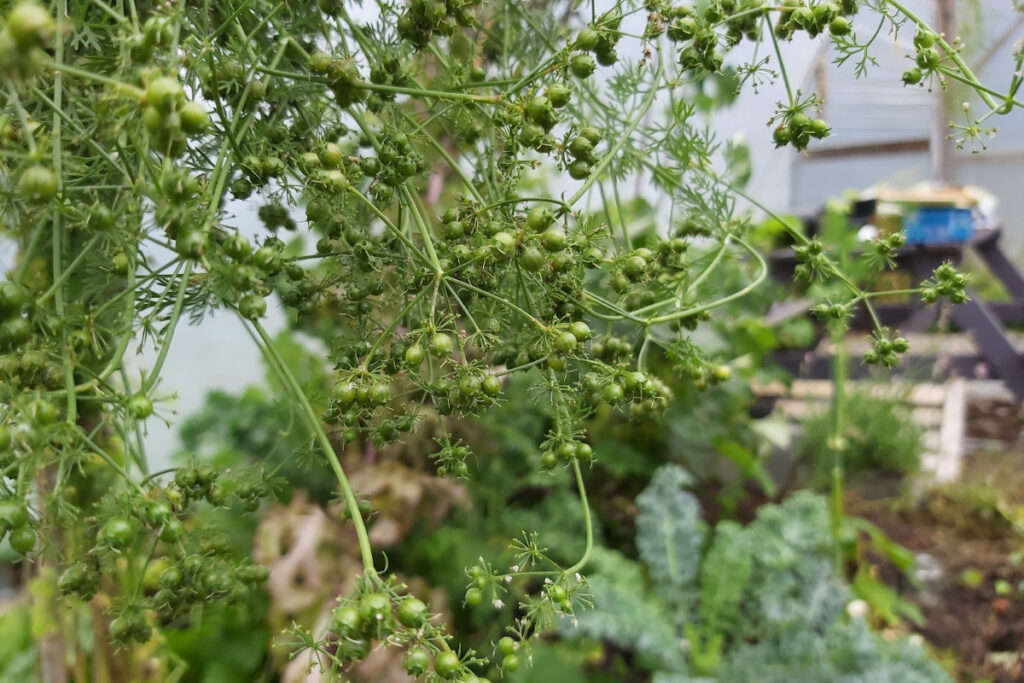
Lucy Chamberlain writes in this issue about growing on chilli plants as houseplants over winter on pg. 12. While Ruth Hays explains how to force bulbs for lovely early indoor spring displays on pg 8, so let’s look at what else we can grow on inside.
For starters, cold weather-sensitive herbs can be potted on and brought indoors for overwinter pickings. The likes of mint will readily grow on from a root cutting in a lovely pot of multipurpose peat free in the home. Do try placing cuttings in water on a sunny windowsill too, just to hedge your bets. Coriander grows well under cover over the cooler months for lovely zesty pickings, and parsley will stand firm outside but indoors will continue producing closer to hand. Otherwise, why not experiment with what you can grow on in the home, it’s fun and often surprising what can be done with just a little undercover love.
TIP With annuals, try and work with plants that were late to grow, seedlings or those which still have energy enough to carry on growing.
Boost soft fruit growing supplies
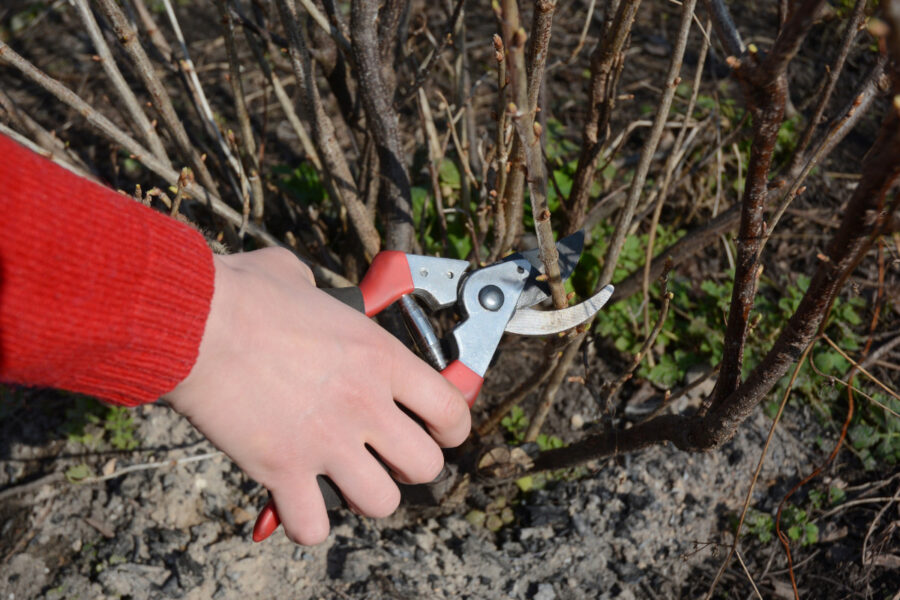
This is worth doing just to smell the lovely scent of blackcurrant that is released when you cut back the plant stems. A smell of summer and the promise of next year’s harvest all in one. Blackcurrant in particular is so easy to obtain cuttings from. Take roughly a hand’s length piece of a healthy-looking stem and place the snipped side about an inch directly into the soil in a border or bed. Do this several times and leave nature to work its magic, and next spring you’ll have lots more plants to pot on or give away. Other soft fruits that are also lovely to work with include gooseberry and redcurrant.
Carry on food growing to save money on your shopping bill
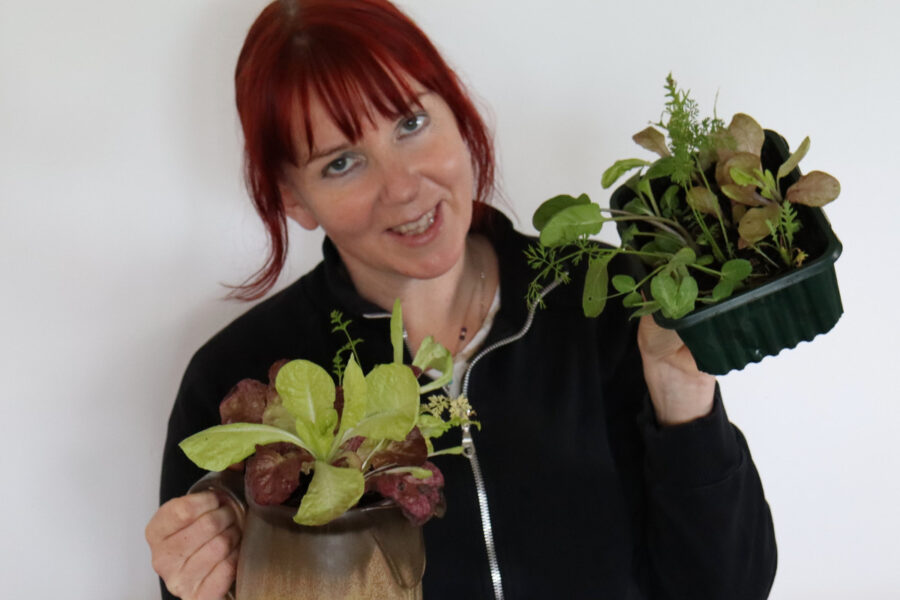
I urge you to find room on a windowsill in your home for lovely pick-and-come-again lettuce, herbs and baby greens. No matter the weather outside, they will be to hand, and make gorgeous inside displays. Even in a small pot or tray they can provide lots of growth for repeat pickings.
TIP You can also get creative with planters – using everything from old plastic trays, to vases and cups you find in charity shops or around the home.
Find more tips, advice and articles like this at the Amateur Gardening website. Subscribe to Amateur Gardening magazine now

